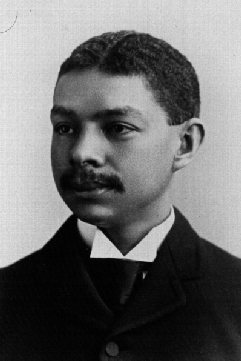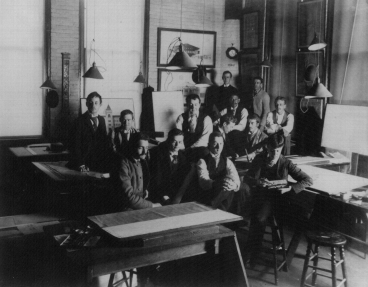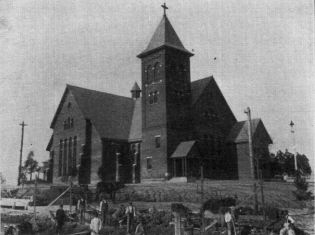8 June 1868–7 Dec. 1942

Robert Robinson Taylor, architect, was born in Wilmington, the son of Henry, a wealthy mulatto house carpenter, and Emilie Taylor, also mulatto. His father later was described as an able black contractor and builder who constructed public commercial and residential buildings; he also built large cargo ships for the Caribbean island trade. Taylor was educated at the Williston School and Gregory Institute, the latter operated by the American Missionary Association, both in Wilmington. He was graduated at the head of his class. After entering the Massachusetts Institute of Technology in 1888, he was graduated in 1892 with the B.S. degree in architecture, the first black to do so.

While at MIT Taylor came to the attention of Booker T. Washington, of the Tuskegee Normal and Industrial Institute in Alabama, who persuaded him to join the staff at Tuskegee in the winter of 1892–93 to transform the Industrial Program into a Department of Mechanical Industries. His first appointment was as instructor in architecture. He became the institute's architect and designed and directed the construction of forty-five buildings on the campus between 1900 and 1913; the structures that he designed between 1913 and 1932, however, were contracted to a firm in Birmingham, Ala. Taylor's favorite building was the chapel, constructed between 1895 and 1898 entirely with student labor and student-made bricks. He also designed other buildings in Alabama and in Arkansas, Mississippi, Ohio, North Carolina, South Carolina, Tennessee, and Virginia.

Taylor left Tuskegee in 1899 to join a large architectural firm in Cleveland, Ohio, where he may also have been briefly in 1892, but after a few years Washington persuaded him to return. In 1911 he was invited to deliver an address at the fiftieth anniversary of the Massachusetts Institute of Technology; it was published in Technology and Industrial Efficiency as "The Scientific Development of the Negro." At Tuskegee he served as director of the department of mechanical industries and as general superintendent of industries before becoming vice-principal of the institute in 1925. From time to time he also was acting principal. By invitation in 1929, he went to Africa to prepare plans for and establish the program of industrial training for the Booker T. Washington Agricultural Institute in Kakata, Monrovia, Liberia, and to determine the type of buildings to be erected. In the same year Lincoln University in Pennsylvania awarded him the honorary doctor of science degree.
In addition to his work at Tuskegee and in Liberia, Taylor designed buildings for other institutions including the Carnegie Library at Livingstone College, Salisbury. He also designed churches, office buildings, and homes. In 1928 he worked with the Hoover Commission in the reconstruction of flooded areas in the Mississippi Valley.

Following his retirement, about 1935, Taylor returned to his birthplace and spent the remainder of his life in Wilmington. Continuing his interest in civic affairs, he was appointed by Governors J.C.B. Ehringhaus in 1936 and J. Melville Broughton in 1942 to successive terms on the board of trustees of the Fayetteville State Teachers College, the first black to hold such a position. The science building on the campus was named in his honor. He had been a member of the Society of Arts of Boston, American Economic Society, Masonic order, and other groups. In Tuskegee he belonged to the local Business League and was active in the Educational Association of Teachers and other educational, business, and professional organizations.
During his retirement Taylor frequently returned to Tuskegee, and it was there, while attending a service in the chapel, that he died. Taylor and his wife, Nellie C., were the parents of three sons and two daughters. He was buried in Pine Forest Cemetery, Wilmington.